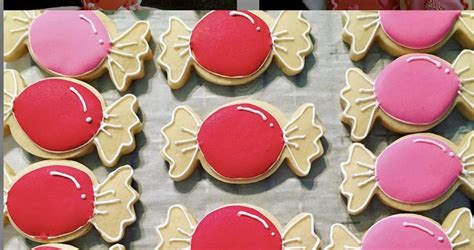Royal Icing: The Secret to Stunning Color Effects
Royal icing, with its smooth, crisp finish and vibrant color capabilities, is a baker's best friend. From delicate lacework to bold, saturated hues, this versatile medium allows for incredible creativity in cake decorating, cookie design, and more. But achieving truly stunning color effects requires understanding the nuances of royal icing and mastering a few key techniques. This article delves into the secrets to unlocking the full potential of royal icing's color palette, transforming your baking creations into edible works of art.
What is Royal Icing and Why is it Ideal for Color?
Royal icing is a meringue-based icing made from egg whites, powdered sugar, and sometimes meringue powder. Its unique consistency, once properly whipped, allows for incredibly fine details and crisp lines. The key to its vibrant color lies in its ability to hold pigment without compromising its texture. Unlike buttercream, which can sometimes dull or mute colors, royal icing’s firm structure allows colors to shine through brightly.
Achieving Vivid and Consistent Colors in Royal Icing
The foundation of vibrant color in royal icing begins with the quality of your ingredients and your technique.
Choosing the Right Food Coloring:
-
Gel Food Coloring: This is the gold standard for royal icing. Gel colors are highly concentrated, resulting in intense hues with minimal impact on the icing's consistency. A small amount goes a long way, allowing for precise color control.
-
Liquid Food Coloring: While easier to find, liquid food coloring can thin royal icing, potentially affecting its consistency and ability to hold its shape. Use sparingly and test thoroughly.
-
Powdered Food Coloring: These are less common for royal icing due to their tendency to create lumps and uneven color distribution.
Mastering the Mixing Technique:
-
Start Small: Begin with a small amount of icing in a separate bowl for each color. This prevents accidental mixing and allows for more precise color adjustments.
-
Add Gradually: Add food coloring a tiny bit at a time, mixing thoroughly after each addition. This ensures an even distribution of color and prevents unexpected variations in shade.
-
Consistency is Key: Ensure the icing remains at the desired consistency throughout the coloring process. Adding too much liquid food coloring can thin the icing excessively.
-
Achieving Pastels: For soft pastels, use less food coloring and add a touch of white royal icing to lighten the desired shade.
How to Achieve Specific Color Effects in Royal Icing
Creating Ombre Effects:
Ombre, with its seamless gradient of colors, adds elegance and sophistication. To create an ombre effect, prepare several bowls of icing, each progressively darker than the last. Use a piping bag with multiple tips, or transition gradually while decorating.
Working with Metallic Colors:
Metallic food colorings, like gold and silver, add a touch of glamour. These are usually powder or liquid-based and should be added to the royal icing following the manufacturer's instructions. Often, a small amount will be sufficient to achieve the desired shimmer.
Creating Shading and Highlights:
For depth and dimension, use varying shades of the same color to create shading and highlights. Apply a darker shade in recessed areas and lighter shades on raised surfaces to emphasize the texture and form.
H2: Frequently Asked Questions (PAA) about Royal Icing Color
How long does colored royal icing last?
Properly stored in airtight containers, colored royal icing can last for several weeks. However, it's best to use it within a week or two for the best results in terms of color vibrancy and consistency.
Can I use natural food coloring in royal icing?
Yes, you can use natural food coloring, but keep in mind that natural colors are often less vibrant than artificial ones. Also, the stability and consistency of the icing may vary depending on the type of natural coloring used.
How do I prevent my royal icing from cracking?
Cracking often occurs due to improper consistency or drying too quickly. Ensure your icing is at the right consistency (stiff peaks), and create a humid environment to slow the drying process.
Why is my royal icing separating?
Royal icing can separate if it's too thin or if air is incorporated during mixing. Use a whisk gently and ensure the consistency is correct before coloring.
What's the best way to store leftover royal icing?
Store leftover royal icing in an airtight container in the refrigerator. Before using again, allow it to come to room temperature and re-whip it to restore its consistency.
Conclusion: Unleashing Your Creative Potential
Mastering the art of royal icing coloring opens up a world of possibilities for your baking. By understanding the nuances of color mixing, ingredient selection, and proper techniques, you can elevate your baking creations from simple treats to stunning masterpieces. Experiment, explore, and enjoy the journey of unlocking the vibrant beauty of royal icing.

